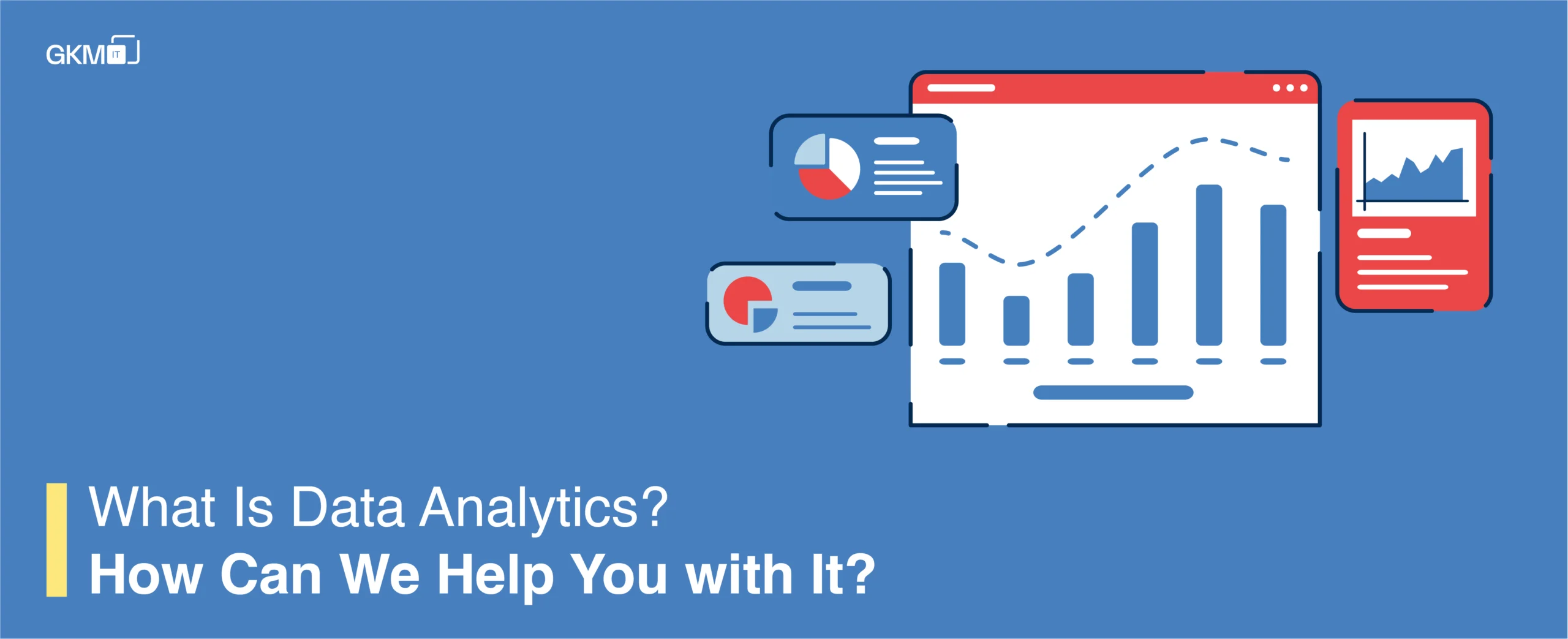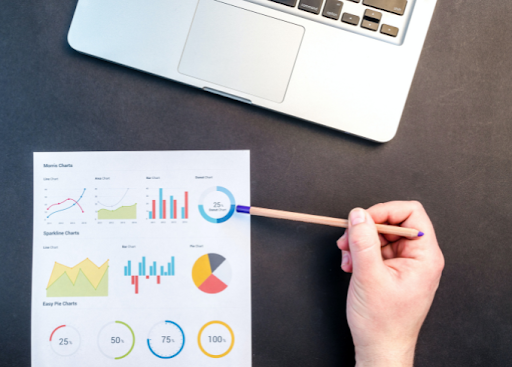
What is Data Analytics? How can we help you with it?
The global big data analytics market was projected to grow from $271.83 Billion in 2022 to $655.53 Billion by the year 2029 at a CAGR of 13.4% in forecast period. The growing use of big data, the increasing adoption of data-related analytics in various industries and the growing use of analytics in IoT are driving the market growth. Along with all that, the demand for data analysts and data scientists is also increasing.
What is Data Analytics?

Analysis of data examines, cleans, transforms, and models data to discover useful information, informing conclusions, and support decision-making. It involves various techniques and tools, such as statistical analysis, machine learning, and data visualisation. It applies to multiple fields, such as business, healthcare, finance, and more. Data analytics can help organisations to make more informed decisions, identify trends and patterns in data, and optimise operations.
Why is Analysis of Data important?

Analysis of data or metrics is important because it allows organisations and individuals to extract valuable insights and knowledge from large and complex data sets, which help inform decision-making, improve performance, and drive growth in various industries such as business, healthcare, finance, government, and non-profit organisations. This analysis allows them to make data-driven decisions and gain a deeper understanding of complex phenomena, so they can make better decisions and improve their performance.
What is the process of analysing data?
The steps for analysis of data typically include the following: 1. Data Collection: The first step is collecting the data for analysis. This data can come from various sources, such as databases, spreadsheets, and log files.
Data Preparation:
This step involves cleaning and preparing the data for analysis. This step may include removing missing or duplicate data, transforming data into an analysable format, and handling outliers.
Data Exploration:
This method involves exploring the data’s structure and characteristics. Data exploration may include tasks such as generating summary statistics, creating visualisations and identifying patterns and trends in the data.
Data Modeling:
This process involves applying statistical or machine learning models to the data to extract useful information. Data Modeling may include building predictive models, cluster analysis, and anomaly detection.
Data Interpretation and Communication:
According to this method, the Data Analyst communicates the insights and conclusions from the data analysis to the relevant stakeholders. This communication and interpretation include creating reports, visualisations, or dashboards to present the findings.
Data implementation:
In this step, we implement the insights generated from the data to improve business performance. Data Analysts may skip or combine some steps and use different techniques and tools depending on the specific task.
Types of Data Analytics:

There are several types of analysing data, each with a specific focus and techniques. Some of the most common types include
Descriptive Analytics:
In this, the analytics focus on describing and summarising data. It involves generating summary statistics, creating visualisations, and identifying patterns and trends in the data.
Diagnostic Analytics:
This type of analytics focuses on identifying the reasons behind the data. It involves drilling down into the data to understand the underlying causes of patterns and trends.
Predictive Analytics:
According to this, analytics uses historical data to predict future events. It involves building statistical or machine learning models to forecast future results based on past data.
Prescriptive Analytics:
This analytics provides recommendations for action based on the data. It involves using optimisation algorithms, simulation, and other techniques to identify the best course of action.
Cognitive Analytics:
The analytics uses natural language processing and machine learning to withdraw insights from unstructured data such as text, speech, and images.
Real-time analytics:
In this method, the analytics simultaneously process data as soon as its generated, allowing for real-time decision-making.
Batch analytics:
This type of analytics process data in batches, allowing offline decision-making.
Please note that these are not mutually exclusive, and some analytics techniques or projects may incorporate several types of analytics.
Tools for Analysing Data:
Many tools can be used in data analysis, depending on the specific task and the type of analytics performance. Some of the most regularly preferred tools include:
Statistical software:
R, SAS, and SPSS regularly opt for statistical analysis and data modeling.
Data visualisation tools:
Tools such as Tableau, Power BI, and QlikView create interactive visualisations and dashboards to help understand and communicate the data.
Excel:
Excel is a widely-used tool that is functional for data preparation, exploration, and basic data analysis tasks.
SQL:
SQL is a programming language that is operative to manage and manipulate relational databases. It is applicable to extract data from databases for analysis.
Data warehousing and ETL tools:
Tools such as Informatica and Talend help extract, transform and load data from different sources into a data warehouse for analysis.
Machine learning libraries and frameworks:
Tools such as scikit-learn, TensorFlow, and Keras are applicable to build and train machine learning models.
Cloud-based analytics platforms:
Cloud-based platforms, such as AWS, Azure, and GCP, provide various analytics and machine learning services, including data storage, processing, and machine learning.
NoSQL databases:
NoSQL databases like MongoDB, Cassandra, and Hbase are progressive for big data and real-time analytics
These are just a few examples, and many other tools and technologies are operative depending on the specific use case and requirements.
Who can use Data or Metric Analytics?
Many people and organisations can use data or metrics analytics, including businesses, government agencies, non-profits, and individuals. Companies can use it to gain insights into customer behaviour, optimise operations, and make better decisions. Government agencies make use of it to improve the delivery of services and make informed policy decisions. Non-profits apply analytics to measure the impact of their programs and make data-driven decisions. Individuals use data or metric analytics to gain insights into their data, such as tracking their spending or monitoring their fitness. In general, anyone with access to data can use this to gain insights and make more informed decisions.
How can GKM IT help you?
We at GKM IT can help you by providing services such as data collection and preprocessing, data warehousing and management, data visualisation, dat
a modeling and analysis, reporting and dashboard, solution integration, training and support, and consulting.
Summing up, “What Is Data Analytics?
Data Analytics plays a crucial role in today’s technological world, where businesses function across oceans. Data analyst experts need to skillfully and meticulously handle a large amount of data, as the entire business strategy and process depend on them to generate revenues and profits. If you have enjoyed reading my blog or have any feedback, leave them in the comments below.
Have a Nice Day!